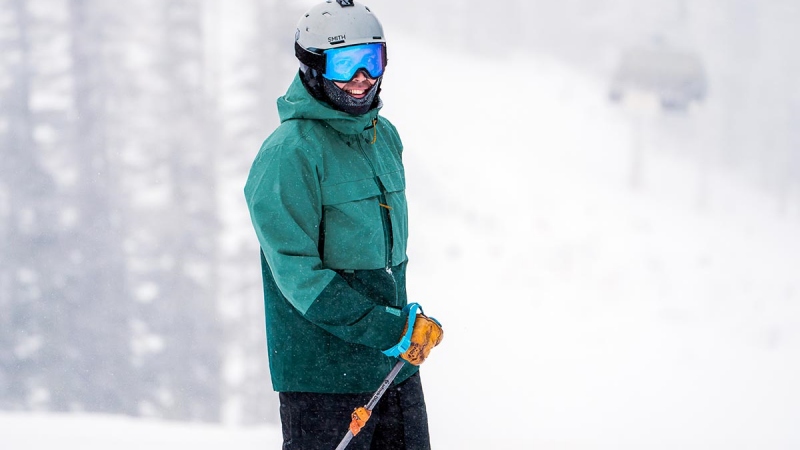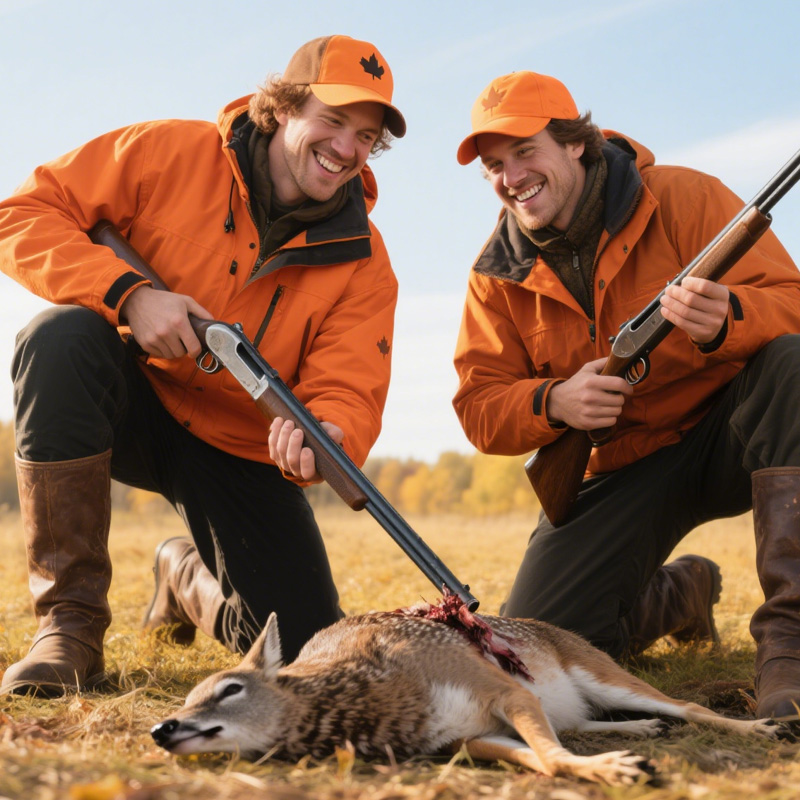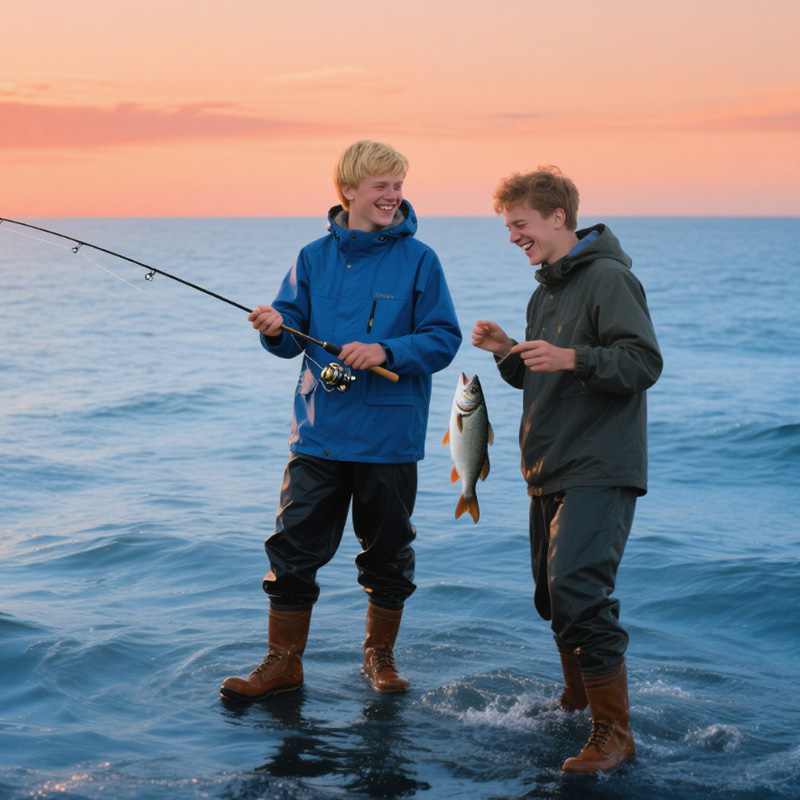When it comes to hitting the slopes, choosing the right gear is crucial for comfort, performance, and style. Among the essential items are snow pants, and two popular types are baggy snow pants and traditional ski pants. While they might seem similar at first glance, there are distinct differences between the two. As the reliable OEM/ODM Ski clothing manufacturer and supplier, BOWINS Garment offers a wide range of custom ski clothes in bulk order for global brands. This article explores these differences in detail to help you make an informed decision.
1. What Are Baggy Snow Pants?
Baggy snow pants are a type of winter sportswear known for their loose and relaxed fit, making them popular among snowboarders and those who prefer a casual style. These pants allow for a wide range of motion, ideal for performing tricks and jumps, and often feature bold colors and patterns influenced by urban and skate culture. They include practical elements like multiple pockets and adjustable waistbands, providing comfort and functionality. Constructed with durable materials, baggy snow pants offer breathability and ventilation, managing heat during intense activities. They are favored by those who prioritize both performance and fashion on the slopes.
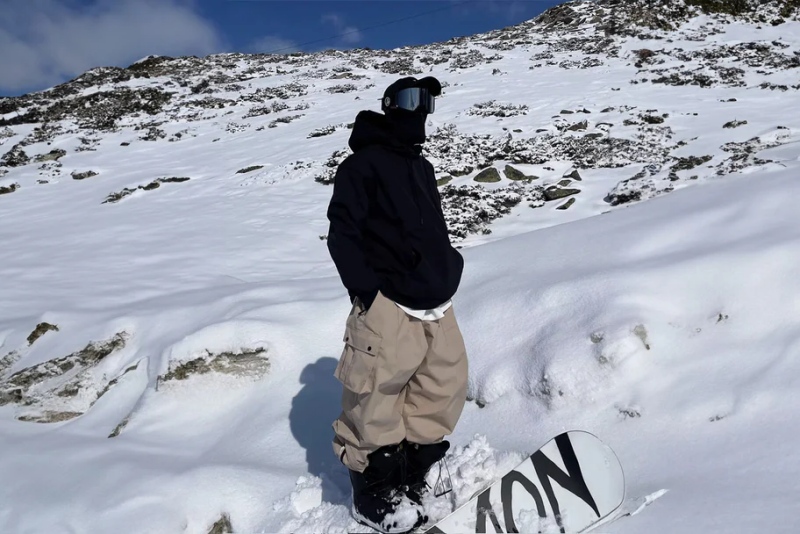
2. What Are Ski Pants?
Ski pants are a type of winter sportswear designed specifically for skiing, featuring a more tailored and aerodynamic fit. They are crafted from advanced, waterproof, and breathable materials, often with insulation to keep skiers warm in cold conditions. Key features include reinforced areas for durability, integrated gaiters to prevent snow from entering boots, and fully taped seams for enhanced waterproofing. Ski pants focus on performance, offering a sleek design that minimizes wind resistance and helps retain body heat, making them ideal for both recreational and competitive skiers.
3. Differences of Baggy Snow Pants VS Ski Pants
3.1 Design and Aesthetics
Baggy Snow Pants:
Style: Baggy snow pants are characterized by their loose fit. This style is popular among snowboarders and those who prioritize a relaxed, urban look.
Functionality: The extra space allows for a broader range of movement, which is particularly appealing for freestyle snowboarders who perform tricks.
Trend Influences: Influenced by streetwear and skate culture, baggy snow pants often feature bold colors and patterns.
Ski Pants:
Style: Ski pants typically offer a more tailored fit, designed to be aerodynamic and minimize wind resistance while skiing.
Functionality: The snug fit aids in maintaining body heat and improving speed, which is important for alpine skiing.
Classic Look: Ski pants usually come in solid colors and more conservative designs, aligning with traditional skiing culture.
3.2 Fabric and Material
Baggy Snow Pants:
Durability: Often made from robust materials to withstand the demands of snowboarding, such as reinforced cuffs and knees.
Breathability: They provide good ventilation, which is vital for snowboarders who generate a lot of body heat.
Water Resistance: Generally feature high waterproof ratings to keep riders dry during extended periods in the snow.
Ski Pants:
Material Technology: Utilize advanced fabrics that balance warmth, waterproofing, and breathability. Materials like Gore-Tex are common.
Layering: Designed to work well with base layers, offering flexibility in temperature regulation.
Insulation: Often have built-in insulation to protect against cold temperatures and windy conditions on ski slopes.
3.3 Functional Features
Baggy Snow Pants:
Pockets and Storage: Frequently equipped with multiple pockets, useful for carrying tools, snacks, or devices.
Adjustability: Features like adjustable waistbands and cuffs allow for a customized fit.
Ventilation: Include vents that can be opened for additional airflow, beneficial during intense physical activity.
Ski Pants:
Seam Sealing: Fully taped seams to enhance waterproofing, crucial for staying dry in wet snow conditions.
Gaiters: Integrated gaiters prevent snow from entering boots, maintaining dryness and warmth.
Reinforced Areas: Extra protection in high-wear areas, such as the inner ankles, to withstand contact with ski edges.
3.4 Performance and Use
Baggy Snow Pants:
Flexibility: The loose fit is ideal for snowboarders who need to move freely, especially when performing tricks or jumps.
Comfort: Offers a relaxed feel, which can be more comfortable for casual riders or those spending time in the terrain park.
Versatility: Can be used for various winter activities beyond snowboarding, like sledding or casual wear in snowy conditions.
Ski Pants:
Efficiency: The streamlined design enhances speed and agility on the slopes, important for competitive or serious recreational skiers.
Heat Retention: The close fit helps retain body heat, essential for long sessions in colder environments.
Purpose-Built: Specifically crafted for skiing, focusing on elements that enhance skiing performance and reduce drag.
3.5 Cultural and Lifestyle Influences
Baggy Snow Pants:
Snowboarding Culture: Embraced by the snowboarding community as part of its rebellious and individualistic identity.
Fashion Statement: Often seen as a style choice, not just functional gear, and can be worn off the slopes in casual settings.
Youth Appeal: Particularly popular among younger riders who are influenced by skateboarding and urban streetwear.
Ski Pants:
Skiing Tradition: Reflect a more traditional and established approach to winter sports attire.
Professionalism: Often associated with serious athletes and those who prioritize performance over fashion.
Resort Aesthetic: Complements the classic skiing look, fitting in well with the resort lifestyle and ski activities.
3.6 Price and Investment
Baggy Snow Pants:
Variety in Pricing: Available in a wide range of prices, from budget-friendly options to high-end brands.
Durability vs. Cost: Consider durability and features in relation to cost, as snowboarders may need to replace pants more frequently due to wear and tear.
Ski Pants:
Higher Initial Investment: Typically, ski pants can be more expensive due to advanced materials and technology.
Longevity: A good pair of ski pants can last multiple seasons if properly cared for, making them a worthwhile investment for frequent skiers.
3.7 Environmental Considerations
Baggy Snow Pants:
Sustainability: Some brands are moving toward using recycled materials and eco-friendly production processes.
Second-Hand Market: Due to their popularity, there is a robust market for second-hand baggy snow pants, promoting reuse and sustainability.
Ski Pants:
Eco-Friendly Innovations: Many manufacturers are investing in sustainable materials and practices, such as PFC-free waterproofing.
Longevity and Impact: The durable nature and extended use of ski pants can reduce environmental impact over time.
3.8 Choosing the Right Pants for You
When deciding between baggy snow pants and ski pants, consider the following factors:
Activity Type: If you are more into snowboarding or freestyle, baggy snow pants may suit your needs better. For alpine skiing, ski pants might be the better choice.
Climate Conditions: Consider the typical weather conditions you will encounter. Ski pants often offer better insulation for colder climates.
Personal Style: Your personal preference for style and comfort can significantly influence your choice.
Budget: Weigh the cost against the features and durability you require.
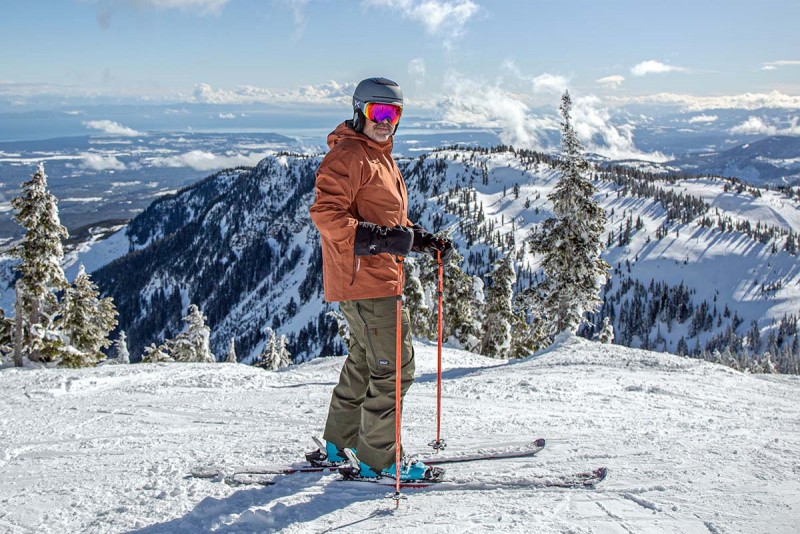
4. Conclusion
Both baggy snow pants and ski pants have their own set of advantages and are tailored to different aspects of winter sports. By understanding the key differences in design, material, and functionality, you can select the pair that best fits your needs and enhances your experience on the snow. Whether you prioritize style, performance, or comfort, there is a perfect pair of snow pants waiting for you.
Quality Inspection Process in Bowins Garment
The quality inspection process is a crucial step in ensuring the quality of clothing products. It typically includes the following steps:
Raw Material Inspection
This is the first step in garment production, where all raw materials are thoroughly examined. Specifically:
Fabric Inspection: Check the fabric’s weight, color difference, yarn count, yarn skipping, color deviation, etc., to ensure that the fabric quality meets production requirements.
Auxiliary Material Inspection: Examine the durability and corrosion resistance of accessories such as buttons and zippers to ensure their reliability.
Cutting Quality Inspection
During the cutting process, the cut fabric is inspected for size, texture, color, and other aspects to ensure accurate sizing and the absence of defects.
Sewing Quality Inspection
Sewing is a key step in garment production. Quality inspectors conduct comprehensive checks at each sewing process step to ensure:
Smooth Stitching: The stitching should be smooth and uniform, with no skipped stitches or broken threads.
Sturdy Structure: The garment structure should be sturdy, with no looseness or deformation.
Fixed Accessories: Buttons, zippers, and other accessories should be securely fixed, with no detachment.
Finished Garment Quality Inspection
Finished garment quality inspection is the final and most critical step in production. Quality inspectors comprehensively check the garment’s size, appearance, and internal structure to ensure:
Accurate Size: The finished garment size should meet design requirements without deviation.
Clean Appearance: The finished garment should have a clean appearance, free from stains, thread ends, and other defects.
Reasonable Internal Structure: Internal structures such as lining and stitching should be reasonable and neat.
Additionally, washing tests and abrasion tests are conducted to ensure the durability and stability of the finished garment.
Packaging Quality Inspection
During the packaging process, quality inspectors comprehensively check the packaging, hangtags, labels, and other aspects to ensure packaging quality meets standard requirements. Specifically:
Intact Packaging: The packaging should be intact, with no damage, deformation, or other issues.
Accurate Hangtag Information: Hangtag information should be accurate and clear, including product name, size, composition, washing instructions, etc.
Standardized Labeling: Labels on the packaging should be standardized, clear, and easy to identify.
Final Inspection Before Shipment
The final inspection before shipment is the last step in the entire quality inspection process, aimed at ensuring that the quality of shipped products meets standard requirements. During this step, quality inspectors conduct a comprehensive check of all aspects of the product to ensure it fully meets standard requirements.
Quality Inspection Records and Feedback
During the quality inspection process, quality inspectors need to record the inspection results and identified issues in detail and promptly provide feedback to relevant departments and personnel. For unqualified products, corrective and preventive measures should be taken to ensure timely resolution of issues.
Over the past decade, BOWINS Garment has emerged as a highly popular manufacturer in the functional clothing industry. It represents a significant technological advancement in ski clothing, particularly in the domain of the BOWINS brand. The evolution of ski components has been a key focus for BOWINS, resulting in their classic ski styles gaining considerable traction in the European and American outdoor markets. These styles have also earned recognition from renowned ski clothing brands worldwide. If you are interested in our products, we encourage you to get in touch with us. The BOWINS design team is prepared to customize ski products to your specific requirements, ensuring that we provide you with top-quality service. Your satisfaction is our utmost priority, and we are dedicated to delivering exceptional solutions that meet your individual needs.
Thanks for your reading!

